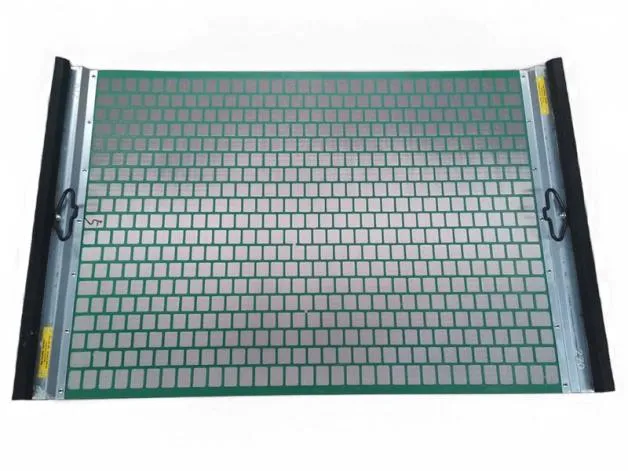- Industrial zone, South of Anping Town, Hengshui, Hebei, China.
- sales@hfpetromesh.com
- +86-18931809706
 Afrikaans
Afrikaans  Albanian
Albanian  Amharic
Amharic  Arabic
Arabic  Armenian
Armenian  Azerbaijani
Azerbaijani  Basque
Basque  Belarusian
Belarusian  Bengali
Bengali  Bosnian
Bosnian  Bulgarian
Bulgarian  Catalan
Catalan  Cebuano
Cebuano  Corsican
Corsican  Croatian
Croatian  Czech
Czech  Danish
Danish  Dutch
Dutch  English
English  Esperanto
Esperanto  Estonian
Estonian  Finnish
Finnish  French
French  Frisian
Frisian  Galician
Galician  Georgian
Georgian  German
German  Greek
Greek  Gujarati
Gujarati  Haitian Creole
Haitian Creole  hausa
hausa  hawaiian
hawaiian  Hebrew
Hebrew  Hindi
Hindi  Miao
Miao  Hungarian
Hungarian  Icelandic
Icelandic  igbo
igbo  Indonesian
Indonesian  irish
irish  Italian
Italian  Japanese
Japanese  Javanese
Javanese  Kannada
Kannada  kazakh
kazakh  Khmer
Khmer  Rwandese
Rwandese  Korean
Korean  Kurdish
Kurdish  Kyrgyz
Kyrgyz  Lao
Lao  Latin
Latin  Latvian
Latvian  Lithuanian
Lithuanian  Luxembourgish
Luxembourgish  Macedonian
Macedonian  Malgashi
Malgashi  Malay
Malay  Malayalam
Malayalam  Maltese
Maltese  Maori
Maori  Marathi
Marathi  Mongolian
Mongolian  Myanmar
Myanmar  Nepali
Nepali  Norwegian
Norwegian  Norwegian
Norwegian  Occitan
Occitan  Pashto
Pashto  Persian
Persian  Polish
Polish  Portuguese
Portuguese  Punjabi
Punjabi  Romanian
Romanian  Russian
Russian  Samoan
Samoan  Scottish Gaelic
Scottish Gaelic  Serbian
Serbian  Sesotho
Sesotho  Shona
Shona  Sindhi
Sindhi  Sinhala
Sinhala  Slovak
Slovak  Slovenian
Slovenian  Somali
Somali  Spanish
Spanish  Sundanese
Sundanese  Swahili
Swahili  Swedish
Swedish  Tagalog
Tagalog  Tajik
Tajik  Tamil
Tamil  Tatar
Tatar  Telugu
Telugu  Thai
Thai  Turkish
Turkish  Turkmen
Turkmen  Ukrainian
Ukrainian  Urdu
Urdu  Uighur
Uighur  Uzbek
Uzbek  Vietnamese
Vietnamese  Welsh
Welsh  Bantu
Bantu  Yiddish
Yiddish  Yoruba
Yoruba  Zulu
Zulu
- Afrikaans
- Albanian
- Amharic
- Arabic
- Armenian
- Azerbaijani
- Basque
- Belarusian
- Bengali
- Bosnian
- Bulgarian
- Catalan
- Cebuano
- Corsican
- Croatian
- Czech
- Danish
- Dutch
- English
- Esperanto
- Estonian
- Finnish
- French
- Frisian
- Galician
- Georgian
- German
- Greek
- Gujarati
- Haitian Creole
- hausa
- hawaiian
- Hebrew
- Hindi
- Miao
- Hungarian
- Icelandic
- igbo
- Indonesian
- irish
- Italian
- Japanese
- Javanese
- Kannada
- kazakh
- Khmer
- Rwandese
- Korean
- Kurdish
- Kyrgyz
- Lao
- Latin
- Latvian
- Lithuanian
- Luxembourgish
- Macedonian
- Malgashi
- Malay
- Malayalam
- Maltese
- Maori
- Marathi
- Mongolian
- Myanmar
- Nepali
- Norwegian
- Norwegian
- Occitan
- Pashto
- Persian
- Polish
- Portuguese
- Punjabi
- Romanian
- Russian
- Samoan
- Scottish Gaelic
- Serbian
- Sesotho
- Shona
- Sindhi
- Sinhala
- Slovak
- Slovenian
- Somali
- Spanish
- Sundanese
- Swahili
- Swedish
- Tagalog
- Tajik
- Tamil
- Tatar
- Telugu
- Thai
- Turkish
- Turkmen
- Ukrainian
- Urdu
- Uighur
- Uzbek
- Vietnamese
- Welsh
- Bantu
- Yiddish
- Yoruba
- Zulu
Durable Steel Grating Flooring for Enhanced Safety and Performance in Industrial Spaces
Understanding Grating Steel Floors A Comprehensive Overview
Grating steel floors have emerged as a popular choice in various industrial and architectural applications due to their unique properties and benefits. These flooring systems are designed from steel bars arranged in a lattice pattern, offering a durable and reliable solution for environments requiring safety and functionality.
One of the primary advantages of grating steel floors is their strength. Made from high-quality steel, they can withstand heavy loads, making them ideal for areas such as warehouses, distribution centers, and manufacturing plants. The inherent load-bearing capabilities ensure that these floors maintain structural integrity over time, even under significant stress. This resilience helps minimize maintenance costs, providing a long-lasting flooring solution.
In addition to strength, grating steel floors are known for their slip-resistance. The open design allows for excellent drainage, preventing the accumulation of water, oils, or other slippery substances. This characteristic is particularly critical in environments where spills are common, such as food processing facilities, chemical plants, and outdoor areas. Ensuring slip resistance enhances safety for workers and reduces the risk of accidents, ultimately contributing to a more productive work environment.
grating steel floor

Another notable benefit of grating steel floors is their ability to facilitate airflow and light penetration. Unlike solid flooring options, grating allows air and light to flow through, promoting ventilation in enclosed spaces. This feature is advantageous in industries where air circulation is crucial for both safety and equipment efficiency. Furthermore, the transparent nature of grating steel floors can help reduce electricity costs by maximizing natural lighting, enhancing energy efficiency in industrial settings.
Environmental considerations also favor steel grating floors. Steel is a recyclable material, and utilizing grating systems can contribute to a company's sustainability initiatives. When a facility is remodeled or decommissioned, the steel can be repurposed rather than ending up in a landfill. This positive environmental impact aligns with growing corporate social responsibility trends and can appeal to environmentally conscious consumers.
Moreover, grating steel floors are customizable, allowing for various configurations, sizes, and designs. Depending on specific needs, manufacturers can create tailored solutions to fit any application, ranging from heavy-duty industrial use to lighter, decorative options for commercial spaces. This versatility makes them suitable for various sectors, including construction, petrochemical, and mining.
In conclusion, grating steel floors represent a smart choice for modern industrial and commercial applications. Their strength, slip-resistance, ventilation capabilities, and environmental benefits combine to create a flooring solution that meets diverse needs. As industries continue to evolve, the demand for effective, durable, and safe flooring systems like grating steel will likely remain strong, confirming their crucial role in future infrastructure design. Embracing such innovative flooring solutions can significantly enhance operational efficiency and safety in numerous environments.
-
Welded Steel Bar Grating: The Rugged Industrial Flooring Solution Built for Load and LongevityNewsJun.24,2025
-
Steel Walkway Grating: Reliable, Resilient, and Built for Every StepNewsJun.24,2025
-
Shale Shaker Screen for Sale: Optimize Drilling Efficiency with Precision Screening PowerNewsJun.24,2025
-
Shaker Screen for Sale: Elevate Your Drilling Efficiency with Durable Separation SolutionsNewsJun.24,2025
-
Press Locked Steel Grating: Industrial Strength with Precision Fit for Heavy-Duty ApplicationsNewsJun.24,2025
-
Perimeter Safety Netting: The Critical Safety Upgrade for Every HelipadNewsJun.24,2025